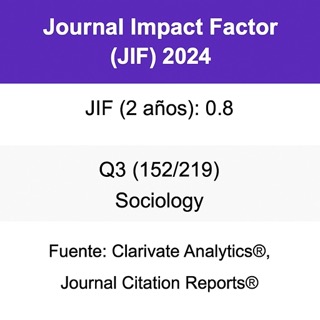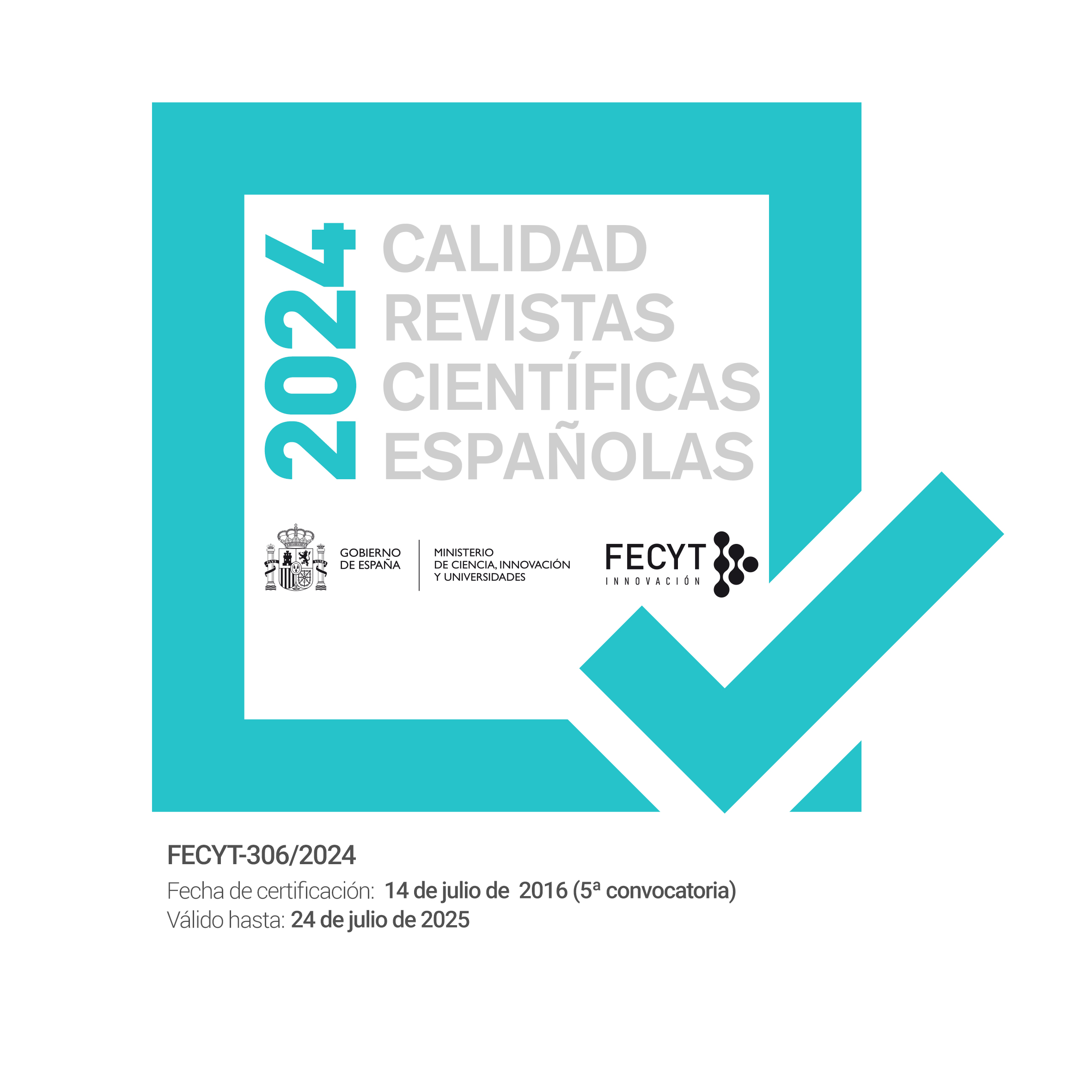Redes sociales en Ejército de Tierra. Un análisis de la operación de apoyo a la pandemia del covid-19 (operación Balmis) en España
DOI:
https://doi.org/10.22325/fes/res.2024.231Palabras clave:
Ejército, Balmis, covid-19, análisis de sentimiento, polaridadResumen
La pandemia originada por la covid-19 conllevó la ejecución de operaciones militares de apoyo civil. Concretamente en España se efectuó la operación Balmis. Se presenta una investigación basada en analítica de redes sociales que monitorizó las cuentas institucionales de Twitter, Instagram y Facebook del Ejército de Tierra del 01/01/2020 al 28/09/2020, con la finalidad de analizar el comportamiento de los perfiles, así como la reacción de la comunidad digital. Se efectuó un análisis de sentimiento de un corpus total de 2.151 publicaciones y 136.171 comentarios. Se aplicaron pruebas de comparación de medias entre las fases, pre-Balmis, Balmis y post-Balmis para estudiar la existencia de diferencias. Los resultados mostraron cambios significativos entre fases en materia de polaridad, emociones y cluster. Así como un incremento significativo de actividad en Twitter y Facebook. Se discute sobre las preferencias de la población hacia las publicaciones con temáticas basadas en la compasión, la pro-actividad y empatía de dicha institución.
Citas
Anzera, G., Gianturco, G., & Massa, A. (2019). Security branding and digital narrations. Security issues representation on Twitter. International Review of Sociology, 29(1), 80-101. https://doi.org/10.1080/03906701.2018.1532656
Ausín, B., González-Sanguino, C., Castellanos, M. Á., & Muñoz, M. (2021). Gender-related differences in the psychological impact of confinement as a consequence of COVID-19in Spain.Journal of Gender Studies, 30(1), 29-38. https://doi.org/10.1080/09589236.2020.1799768
Azinhaes, J., Batista, F. & Ferreira, J. (2021). eWOM for public institutions: application to the case of the Portuguese Army. Social Network Analysis and Mining, 11(1) https://doi.org/10.1007/s13278-021-00837-w
Barkur, G., & Kamath, G. B. (2020). Sentiment analysis of nationwide lockdown due to Covid 19 outbreak: Evidence from India. Asian journal of psychiatry, 51, 102089. https://doi.org/10.1016/j.ajp.2020.102089
Beck, D., & Spencer, A. (2021). Just a bit of fun: the camouflaging and defending functions of humour in recruitment videos of the British and Swedish armed forces. Cambridge Review of International Affairs, 34(1), 65-84. https://doi.org/10.1080/09557571.2020.1719039
Berger, G., Opuszko, M., & Ruhland, J. (2019). The Impact of Public Scandals on Social Media: A Sentiment Analysis on Youtube to Detect the Influence on Reputation. In ECSM 2019 6th European Conference on Social Media (p. 36). Academic Conferences and Publishing Limited.
Cenit, M. D., Portero, I. A., Martínez, R. M., y García, A. C. (2016). Experiencias de la participación militar española en misiones internacionales: el caso de los oficiales del Ejército de Tierra (1993-2015). Revista Española de Ciencia Politica, (42), 125-145. https://doi.org/10.21308/recp.42.05
Crilley, R. (2016). Like and share forces: Making sense of military social media sites. En Understanding popular culture and world politics in the digital age (pp. 51-67). Routledge.
De Vincenzo, C., Serio, F., Franceschi, A., Barbagallo, S., & Zamperini, A. (2022). A “viral epistolary” and psychosocial spirituality: Restoring transcendental meaning during COVID-19 through a digital community letter-writing project. Pastoral Psychology, 71(2), 153-171. https://doi.org/10.1007/s11089-021-00991-0
Fanpage Karma (2023, marzo 16). Indicadores clave de rendimiento. https://www.fanpagekarma.com/es/features
García-Patos Herreros, P. J. (2021). Seis lecciones sobre la COVID-19 percibidas por un analista de las operaciones Balmis y Baluarte. Ejército: de Tierra Español, (969), 32-37. https://dialnet.unirioja.es/servlet/ejemplar?codigo=594158&info=open_link_ejemplar
Gibson-Fall, F. (2021). Military responses to COVID-19, emerging trends in global civil-military engagements. Review of International Studies, 47(2), 155-170. https://doi.org/10.1017/S0260210521000048
Golan, O., & Ben-Ari, E. (2018). Armed forces, cyberspace, and global images: The official website of the Israeli Defense Forces 2007–2015. Armed Forces & Society, 44(2), 280-300. https://doi.org/10.1177/0095327X16670694
Gozzo, S., & D'Agata, R. (2022). COVID-19 policies and the arising of debate on Twitter. Frontiers in Sociology, 7. https://doi.org/10.3389/fsoc.2022.1106393
Grignoli, N., Filipponi, C., & Petrocchi, S. (2022). Eliciting empathetic drives to prosocial behavior during stressful events. Frontiers in Psychology, 13. https://doi.org/10.3389/fpsyg.2022.963544
Guillén, J., Miranda, J., Berrocal, J., Garcia-Alonso, J., Murillo, J. M., & Canal, C. (2013). People as a service: a mobile-centric model for providing collective sociological profiles. IEEE Software, 31(2), 48-53. http://hdl.handle.net/10630/8186
Hernández Moreno, J. (2016). La modernidad líquida. Política y cultura, (45), 279-282. https://www.redalyc.org/articulo.oa?id=26745428014
Jester, N. (2021). Army recruitment video advertisements in the US and UK since 2002: Challenging ideals of hegemonic military masculinity?. Media, War & Conflict, 14(1), 57-74. https://doi.org/10.1177/1750635219859488
Jones, R., Mougouei, D., & Evans, S. L. (2021). Understanding the emotional response to COVID‐19 information in news and social media: A mental health perspective. Human behavior and emerging technologies, 3(5), 832-842. https://doi.org/10.1002/hbe2.304
Kozáková, E., & Saliger, R. (2019). The role of emotional intelligence in direct leadership in the army of the Czech Republic. Acta Universitatis Agriculturae et Silviculturae Mendelianae Brunensis, 67(1), 265-273. https://doi.org/10.11118/actaun201967010265
Krippendorff, K. (1980). Content analysis: An introduction to its methodology. Sage. https://bit.ly/3bmaPv0
Massa, A., & Anzera, G. (2022). The platformization of military communication: The digital strategy of the Israel Defense Forces on Twitter. Media, War & Conflict, 16(3), https://doi.org/10.1177/17506352221101257
MeaningCloud. (2023). Documentación. https://learn.meaningcloud.com/developer/text-clustering/1.1/doc/what-is-text-clustering
Mena-Muñoz, S. M., Arias, S. M. M., Valcarce, D. P., y Arroyo, R. G. (2022). Impacto de la Operación Balmis en las cuentas de Facebook de las unidades militares implicadas. Estudios Sobre el Mensaje Periodístico, (28), 341-352. https://doi.org/10.5209/esmp.77170
Miskimmon, A., O'Loughlin, B., & Roselle, L. (2014). Strategic narratives: Communication power and the New World Order. Routledge.
Mossberger, K., & Tolbert, C. J. (2021). Digital citizenship and digital communities: How technology matters for individuals and communities. International Journal of E-Planning Research (IJEPR), 10(3), 19-34. https://doi.org/10.4018/IJEPR.20210701.oa2
Ng, C. Y., Law, K. M., & Ip, A. W. (2021). Assessing public opinions of products through sentiment analysis: product satisfaction assessment by sentiment analysis. Journal of Organizational and End User Computing (JOEUC), 33(4), 125-141. https://doi.org/10.4018/JOEUC.20210701.oa6
Pina, J. (2022a). Análisis de las comunicaciones en Twitter de las Fuerzas Armadas y Cuerpos de Seguridad: un modelo empírico. Profesional de la Información, 31(4), e310403. https://doi.org/10.3145/epi.2022.jul.03
Pina, J. M. (2022b). Las Fuerzas Armadas en Twitter: un análisis de contenido. Revista de Pensamiento Estratégico y Seguridad CISDE, 7(2), 27-36. http://www.uajournals.com/ojs/index.php/cisdejournal/article/view/1045
Plutchik, R. (1984). Emotions: A general psychoevolutionary theory. En Approaches to emotion (pp. 197-219). Routledge.
Qin, X., Yang, F., Jiang, Z., & Zhong, B. (2022). Empathy not quarantined: social support via social media helps maintain empathy during the COVID-19 pandemic. Social Media+ Society, 8(1). https://doi.org/20563051221086234.
Rockstuhl, T., Seiler, S., Ang, S., Van Dyne, L., & Annen, H. (2011). Beyond general intelligence (IQ) and emotional intelligence (EQ): The role of cultural intelligence (CQ) on cross‐border leadership effectiveness in a globalized world. Journal of Social Issues, 67(4), 825-840. https://doi.org/10.1111/j.1540-4560.2011.01730.x
Samet, E. D. (2005). Leaving no warriors behind: The ancient roots of a modern sensibility. Armed Forces & Society, 31(4), 623-649. https://www.jstor.org/stable/48608663
Silva Palma, E. M., Reis de Sousa, A., Brito Teixeira, J. R., Carneiro Moreira, W., Monteiro de Araújo, A. C., Vieira Souza, L. F., Ramos dos Anjos, J. C, Souza de Almeida Portela, H., Féliz de Carvalho, H. E., de Oliveira Muniz, V., Pereira Vieira Barreto, N. M., Santos Almeida, É., Nunes Mota, T., Diniz dos Santos, S., da Silva Souza, A. T., Costa da Silva, J., Pinheiro Landim Almeida, C. A., García Lourenção, L., Macêdo de Queiroz, A., Fortes Júnior, E. J., das Merces, M. C., Melo Almeida Lima, S. V., Duarte da Silva, F. M., Pereira Gomes, N., Silva Servo, M. L., Souza de Santana Carvalho, E., Barros, S., De Araujo, T. M., Ferreira de Oliveira, M. A., Lopes de Sousa, Á. F., & Costa Mendes, I. A. (2022). Influence of sociodemographic and emotional factors on the relationship between self-compassion and perceived stress among men residing in Brazil during the COVID-19 pandemic. International Journal of Environmental Research and Public Health, 19(13), 8159. https://doi.org/10.3390/ijerph19138159
Silvestri, L. (2016). Mortars and memes: Participating in pop culture from a war zone. Media, War & Conflict, 9(1), 27-42. https://doi.org/10.1177/1750635215611608
Sherawat, D. (2015). Mining emotions (anger & fear) from Indian army fans page on Facebook. En 2015 International Conference on Advances in Computer Engineering and Applications (pp. 315-320). IEEE.
Trisna, K. W., & Jie, H. J. (2022). Deep learning approach for aspect-based sentiment classification: a comparative review. Applied Artificial Intelligence, 36(1), 2014186. https://doi.org/10.1080/08839514.2021.2014186
United Nations Development Program [UNDP]. (2020). Annual report on Evaluation 2020. United Nations Development Program. New York, NY, USA: Independent Evaluation Office of United Nations Development Program. http://web.undp.org/evaluation/documents/annual-report/2021/UNDP-ARE%202020.pdf
Wallace, C. L., Wladkowski, S. P., Gibson, A., & White, P. (2020). Grief during the COVID-19 pandemic: considerations for palliative care providers. Journal of pain and symptom management, 60(1), e70-e76.
Wong, J., Yi, P. X., Quek, F. Y., Lua, V. Y., Majeed, N. M., & Hartanto, A. (2022). A four-level meta-analytic review of the relationship between social media and well-being: a fresh perspective in the context of COVID-19. Current Psychology, 43, 1-15. https://doi.org/10.1007/s12144-022-04092-w
Publicado
Cómo citar
Número
Sección
Licencia
Derechos de autor 2024 Diego Delgado Bujedo, Raquel Lozano Blasco

Esta obra está bajo una licencia internacional Creative Commons Atribución-NoComercial 4.0.
Todas las publicaciones de la Revista Española de Sociología se realizarán bajo una licencia abierta Creative Commons de Reconocimiento 4.0 Internacional (CC BY 4.0). Dicha licencia establece que los autores son los poseedores de los derechos de propiedad intelectual de sus trabajos, que pueden redistribuirse a cambio de un reconocimiento adecuado. Para más información de la licencia Creative Commons, consultar aquí.
Una vez aceptado un artículo para su publicación, la Revista Española de Sociología solicitará al denominado "autor para la correspondencia" la aceptación de una licencia obligatoria Creative Commons incluida en un acuerdo o contrato de publicación.




